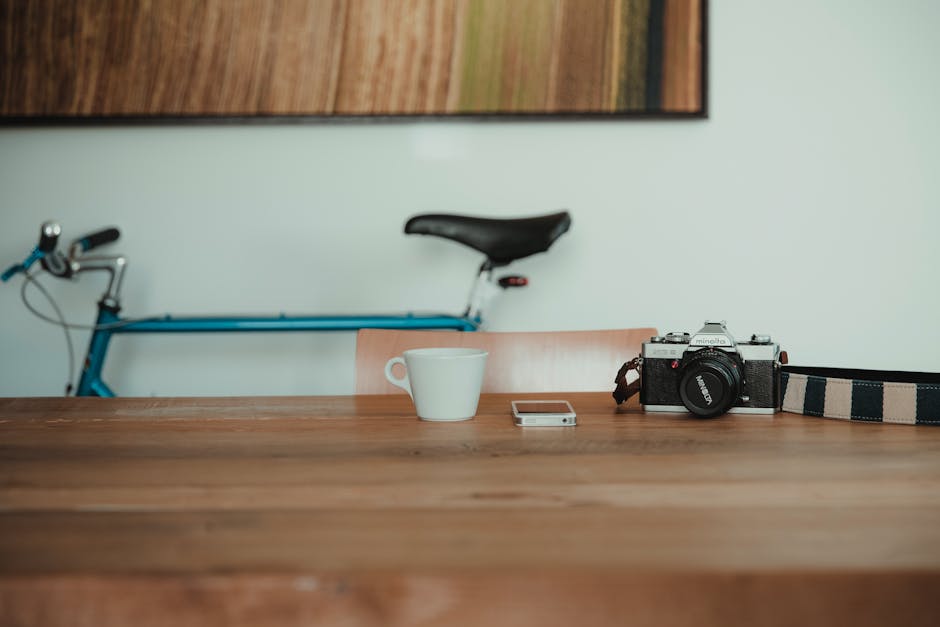Temporal Photography: Master Long Exposure & Motion Blur Techniques!
In a world that often moves at breakneck speed, have you ever wished to capture the essence of time itself? With temporal photography—particularly through long exposure and motion blur techniques—you can indeed freeze fleeting moments or create mesmerizing depictions of motion. This deep dive into the realm of temporal photography will not only equip you with practical tips to enhance your skills but also inspire you to develop an artistic vision that reflects time’s fluidity.
Understanding Temporal Photography
At its core, temporal photography aims to explore the relationship between time and motion. Imagine gazing at a river where the flowing water appears silky and smooth, capturing the serenity of a moment despite its perpetual movement. This is the magic of long exposure—a technique that allows you to stretch a fragment of time into a visually tangible experience.
When it comes to temporal photography, two key techniques define this genre: long exposure and motion blur. So, let’s delve a bit deeper into each one, shall we?
Long Exposure: The Essence of Time Stretching
Long exposure photography captures images over extended periods, typically ranging from several seconds to minutes. It requires a sturdy tripod, which is essential for minimizing camera shake, allowing you to focus solely on the elements you wish to capture. The beauty of long exposure lies in its ability to transform everyday scenes into stunning artwork.
How to Achieve Stunning Long Exposure Shots

-
Gear Up: Invest in a sturdy tripod and a camera with manual settings. A shutter release cable or remote will help to further reduce camera shake.
-
Select the Right Location: Waterfalls, urban settings at night, starry skies, and busy streets can serve as fantastic backdrops for long exposure photography.
-
Setting Exposure: Begin by setting your camera to manual mode. Choose a low ISO (100 or lower), a narrow aperture (f/8 – f/16 is often effective), and adjust your shutter speed to experiment with the duration.
-
Utilize a Neutral Density Filter: To achieve longer exposure times in bright light, consider using a neutral density (ND) filter. This tool reduces the amount of light that enters your lens, enabling more extended exposures even during daylight.
-
Focus on Movement: One of the hallmarks of long exposure photography is capturing the movement of subjects over time—whether it's the mesmerizing waves of the ocean or the twinkling lights of a cityscape at dusk. This method allows the viewer to feel the energy of the scene, immersing them in a dynamic visual experience.
By mastering these techniques, you can create breathtaking images that convey a sense of time, tranquility, or chaos—depending on your artistic intent.
Motion Blur: Emphasizing Movement

While long exposure accounts for prolonged time frames, motion blur incorporates movement within a single frame. This effect captures the dynamic nature of motion while still maintaining clarity in static elements. Imagine a bustling city street where pedestrians are blurred in motion while stationary buildings remain perfectly sharp.
Techniques for Creating Stunning Motion Blur Images

-
Choosing Your Subject: Look for subjects that exhibit clear motion—busy streets, athletes in action, or flowing water serve as great examples.
-
Shutter Speed Settings: Unlike long exposure photography, motion blur requires faster shutter speeds. However, you can experiment between 1/30s to 1/500s depending on your desired effect.
-
Panning: Employ the panning technique to capture the movement of your subject. As the subject passes by, follow their trajectory with your camera to create the motion blur effect while keeping them in focus.
-
Combining Techniques: Some photographers creatively blend long exposure and motion blur in a single image. For instance, a blurred cyclist whizzing through a static landscape might use a long exposure to soften the background, creating a captivating contrast.
-
Experiment with Intent: Don’t be afraid to experiment! Get creative with different angles and perspectives to achieve the desired emotional impact. Photos should evoke strong feelings, compelling viewers to reflect on the subject's story—a vivid urban pulse or the serene flow of nature.
Technical Considerations for Temporal Photography

As you embark on your challenge to master temporal photography, attention to detail and technical settings is paramount. Here are a few essentials to keep in mind:
-
Use RAW Format: Shooting in RAW allows for greater flexibility during post-processing, preserving details and colors that might be lost in JPEG.
-
Stabilization: If you lack a sturdy tripod, consider using image stabilization features on your camera, as they can significantly reduce blur from shakiness.
-
Low Light Scenarios: Long exposure shots in low-light situations can often lead to noise in images. Utilize noise reduction techniques during post-processing to maintain clarity and achieve the desired aesthetic.
-
Understanding Histograms: Familiarize yourself with how histograms work to avoid overexposing highlights or underexposing shadows. This knowledge can save hours of editing later on.
For further exploration of exploiting time in photography, consider navigating the world of shadows and light through shadow play, or investigating how light shapes photographic narratives.
Composition Tips for Temporal Photography

Capturing temporal images isn't just about the techniques; composition plays a pivotal role in elevating your photography to the next level. Here are valuable composition tips to consider when composing temporal photographs:
Rule of Thirds

Utilize the rule of thirds as a foundational guideline. Imagine your frame divided into a 3x3 grid where you place your focal points. This technique adds balance and visual intrigue to your images.
Leading Lines

Incorporate leading lines like roads, rivers, or walkways to guide the viewer's eye toward your main subject. It can enhance depth and lead to compelling storytelling.
Aesthetic Framing

Frame your subject to create a sense of encapsulation. Use natural elements—like tree branches or rooftops—to create a frame within a frame that draws focus to your central theme.
Balance Dynamic Elements

When working with motion, make sure to balance dynamic elements in the shot. Capture the interplay of movement and stillness, allowing both to coexist harmoniously.
Color and Emotion

Utilize color theory to invoke emotion in your images. Rich blues can communicate tranquility, while bold reds and yellows inject energy and urgency. If exploring emotional depth interests you, check out how color psychology shapes perception.
Creating a Sense of Place

Develop a strong sense of place in your photographs by including context. Whether it's the swirling water at a waterfall or bustling city life, setting the scene is integral to telling a holistic story.
Inspiration from the Masters

One of the greatest ways to improve your own photography is to learn from the masters. Renowned photographers like Michael Kenna and Hiroshi Sugimoto have played critical roles in advancing long exposure techniques. Their works feature hauntingly beautiful compositions and push the boundaries of temporal photography.
Consider studying Kenna’s ethereal landscapes where the calmness of long exposure captures the heart of a moment. Alternatively, delve into Sugimoto’s work that often challenges perceptions of time and space in his minimalist captures of seascapes and architecture.
Classic Techniques to Embellish Modern Gear

As you gather inspiration from these legends, integrating different styles and philosophies into your temporal photography journey is invaluable. The advancements in photography gear, including ultra-fast lenses and digital filters, offer contemporary artists an edge. Yet, the foundational principles set by time-honored photographers remain critical to creating evocative imagery.
Next Steps: Your Temporal Photography Journey
As you embrace the intricacies of temporal photography, continue to experiment and develop your unique style. With ongoing practice, you'll learn to blend your technical knowledge with creative intuition, unlocking an impressive repertoire of images that echo time's transient beauty.
In addition, consider sharing your evolution and epiphanies with fellow photographers, contributing to a collective growth sphere that nourishes creativity. Join photography forums or social media groups to engage in discussions, garner feedback, and shepherd your artistic journey with encouragement.
To dive deeper into other subjects that traverse the intersection of emotion and visuals, explore articles like how cultural heritage informs photography, or utilizing texture to evoke emotion. Each piece exists as a gateway to maximizing your storytelling potential.
By transforming your approach to temporal photography, you will not only enhance your skillset but instill a profound appreciation for the intricate dance between time, motion, and stillness—capturing the essence of life in a visually artistic form. Now, grab that camera, experiment with these techniques, and let your creativity soar!
:





